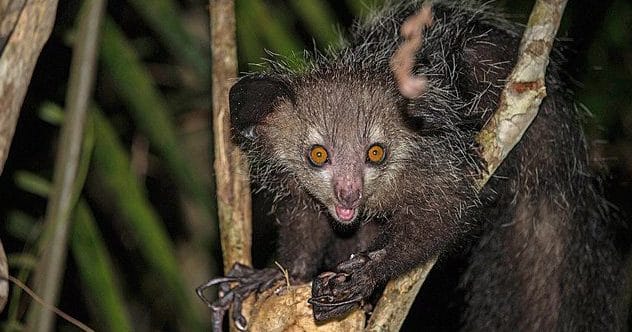What a whirlwind 2022 was! As the world opened up post-lockdown, scientists dove back into their labs, and the results were nothing short of astounding. We saw breakthroughs in immunology, giant leaps in space travel, and even hints that nuclear fusion could power our future. But beyond these headline-grabbers, 2022 also unveiled a collection of truly bizarre and unexpected scientific findings. Think rhino-sized turtles and primates with peculiar habits!
Get ready to explore ten of the wildest and most fascinating scientific discoveries that made us scratch our heads and marvel at the wonders of science in 2022.
10. Brain Cells Taught to Play Pong
Brain cells are incredible, aren’t they? In 2022, researchers at Melbourne’s Cortical Labs took this fascination to a new level with their DishBrain project. They grew synthetic neurons in a petri dish, allowing them to develop on a micro-electrode array chip. These special chips can stimulate the cells electrically while also monitoring what they’re up to.
As these brain cells grew, they connected and formed neural networks, much like those inside our own brains. Then came the fun part: the researchers linked DishBrain to a computer and started a game of Pong. When DishBrain performed well, making the paddle hit the ball, the neurons received a positive jolt through the chip. Poor performance, on the other hand, resulted in a less pleasant, entropically unfavorable stimulus. Amazingly, within just five minutes, the neurons significantly improved their game. They essentially “learned” to play better! The team hailed DishBrain as a major step forward in “synthetic biological intelligence.”
9. T. Rex’s Tiny Arms: A Secret Tool for Love?
The Tyrannosaurus rex is famous as one of Earth’s most fearsome predators. But those tiny, almost comical arms have always been a puzzle. Well, a recent study by scientists in Argentina might have an answer. They suggest these stubby limbs weren’t useless after all; they might have helped the giant dinosaur during mating, perhaps as a handy tool in the heat of passion.
This idea came after the discovery of a new dinosaur species, Meraxes gigas. Much like the T. rex, Meraxes gigas was a massive predator with surprisingly small arms. Fossil evidence shows this beast was about 36 feet (11 meters) long, but its forearm was only half the size of its skull. Scientists think these Meraxes used their heads and mouths for fighting, while their arms played a role in other activities, like holding onto a partner during sex. If this was true for Meraxes, it could very well apply to the Tyrannosaurus too. Lead author Juan Canale explained, “I’m convinced that those proportionally tiny arms had some sort of function. The skeleton shows large muscle insertions and fully developed pectoral girdles, so the arm had strong muscles.”
8. Kale Face: Fetuses Show Their Veggie Preferences
Getting kids to eat their greens can be a struggle, but it seems a dislike for certain vegetables might start even before birth! In September 2022, advanced imaging techniques revealed that babies in the womb actually grimace when their mother eats kale. Carrots, however, seem to get a much happier reaction.
Scientists from Durham University in the UK used 4D ultrasound to observe 100 fetuses. Mothers were given a capsule containing either carrot or kale powder. On the scans, fetuses whose mothers had the carrot powder appeared almost to laugh with joy. But the babies exposed to kale scrunched up their faces in what looked like disgust. For a long time, scientists have suspected that unborn babies can experience taste as they ingest nutrients from their mother. However, previous studies mainly focused on behavior after birth. According to author Beyza Ustun, this study “is the first to see these reactions prior to birth.”
7. Smile Your Way to Happiness: It’s True!
Here’s a cheerful discovery! For years, people have said that smiling can make you feel a bit happier, and in 2022, psychologists confirmed it. The Many Smiles Collaboration, led by Nicholas Coles of Stanford University, involved nearly 4,000 volunteers from 19 countries. They were asked to smile using different techniques.
Some smiled naturally, using the muscles around their mouths. Others copied an actor’s smile. A third group held a pen between their teeth to mimic the muscle movement of a smile. Participants rated their happiness while smiling and while maintaining a neutral expression. They were also shown pleasant images, like puppies, kittens, and flowers, to gauge their happiness levels. Coles found that while the forced smiles (with the pen) didn’t make much emotional difference, those who smiled naturally did report feeling slightly more cheerful. These happy grins tap into what’s known as the “facial feedback hypothesis.” Basically, if your face looks happy, you’re more likely to feel good inside, while frowning can actually make you feel a bit down.
6. Aye-Ayes: Masters of Middle-Finger Nose Picking
The animal kingdom is full of strange sights, and the aye-aye, a small primate from Madagascar, definitely contributes to the weirdness with its peculiar habit: nose-picking. In some cultures, aye-ayes are even considered omens of death. Legend has it that if an aye-aye points its crooked, spindly finger at you, your days are numbered.
But those eerie fingers have other uses besides marking the unfortunate. Aye-ayes use them to dig out grubs for a tasty meal. And now, it seems they use them for unearthing boogers too. Scientists investigating aye-aye behavior created CT scans showing just how far their fingers go when they pick their noses. The images suggest these mammals practically scrape the back of their own brains! Researchers are now curious why so many animals pick their noses when there doesn’t seem to be any clear benefit. So far, over 12 species of primates, including orangutans, chimpanzees, and yes, humans, have been caught red-handed (or red-fingered).
5. A Whole New Way for Molecules to Bond

In July 2022, physicists in Germany announced an exciting, never-before-seen breakthrough in particle science. A team from the University of Stuttgart detected a new type of molecular bond. This unique bond formed between a positive ion and a giant particle known as a Rydberg atom. Rydberg atoms are created when an outer electron gets super excited and jumps much further from the nucleus than usual. Sometimes, these Rydberg atoms can be 1,000 times larger than their normal counterparts.
To achieve this amazing feat, scientists used a cloud of rubidium cooled to just a tiny bit above absolute zero—the temperature where all movement stops. They used lasers first to strip some rubidium atoms of their electrons, turning them into positively charged ions. Then, they used lasers to excite other atoms into a Rydberg state. When ions and Rydberg atoms are together at such extremely low temperatures, they start to interact. The ions change the electromagnetic structure of the atoms, and bonds can form—like the one observed in Stuttgart. Unlike most molecular bonds we know, which are a fraction of a nanometer long, this newly discovered bond is longer than some types of bacteria! A truly record-breaking find.
4. Prehistoric Europe Was Home to Rhino-Sized Turtles
When a newly found species gets named after a biblical sea monster, you know it must have been enormous. Meet Leviathanochelys aenigmatica, a giant turtle thought to have measured around 13 feet (4 meters) in length. It swam the oceans around what is now Europe between 83.6 to 72.1 million years ago. This marine behemoth lived during the Late Cretaceous period.
Scientists named this rhino-sized beast after Leviathan, a legendary sea serpent with multiple heads. Its fossils, including a pelvis and parts of a shell, were discovered in the Cal Torrades area of northeastern Spain. Until this discovery, evidence of such giant marine turtles had mostly been found around the Americas. The team that unearthed L. aenigmatica was surprised to find another turtle of such massive proportions in Europe. While Archelon, which appeared about six million years after L. aenigmatica, still holds the record for the largest known marine turtle, this newcomer offers stiff competition. As the researchers noted, “The discovery…sheds a light on the diversity of marine turtles and on how the phenomenon of gigantism in these groups was also occurring in Europe.”
3. Uncovering Britain’s Prehistoric Cannibals
In 2022, we learned a rather unsettling fact: at one point, the UK might have been inhabited by cannibals. Scientists found human remains at Gough’s Cave in Somerset and Kendrick’s Cave in Llandudno, both dating back to around the end of the last ice age. These remains provided the oldest DNA ever found in Britain. Through analysis, molecular biologists were able to learn a lot about the country’s ancient inhabitants.
The team was surprised to find that the DNA showed two distinct groups of humans living in Britain at that time. Based on findings from Kendrick’s Cave, one group mainly ate fish and other marine life. However, the evidence from Gough’s Cave pointed to cannibalism. The remains of this potential people-eater were found to share lineage with Goyet Q2—a 15,000-year-old body discovered in Belgium, which also showed signs of cannibalistic practices. This discovery offers a grim but fascinating glimpse into the harsh realities of life for some of Britain’s earliest residents.
2. The World’s First Synthetic Embryo Created
The use of stem cells in research continues to be a topic of debate. However, in August 2022, a group from the Weizmann Institute in Israel used them to achieve a groundbreaking feat: building the first-ever synthetic embryo. Remarkably, no sperm or eggs were involved in this process, and no fertilization took place. Instead, researchers took stem cells from mice and carefully guided them to assemble into an embryo-like structure. This structure even developed a fledgling brain, an intestinal tract, and a beating heart.
In their published paper, the team explained that this pioneering breakthrough could offer deeper insights into how embryos develop. They also believe it might lead to a reduction in the number of experiments performed on animals in the long run. They hope that similar technology could one day be used to grow cells and tissues for human transplants. The potential applications are truly vast. Study lead Jacob Hanna stated, “Remarkably, we show that embryonic stem cells generate whole synthetic embryos, meaning this includes the placenta and yolk sac surrounding the embryo. We are truly excited about this work and its implications.”
1. Male Mason Wasps Wield Their Penis Spines in Battle
Picture this: you’re a hungry tree frog looking for a meal. You spot a tasty-looking mason wasp, get ready to gulp it down, and suddenly, it stabs you with its barbed penis. Yes, you read that right!
Until recently, scientists thought only female mason wasps could defend themselves against predators. Females have stingers and toxins, while males were believed to be defenseless. But now we know that’s not true. The male mason wasp has two retractable genital spines that it uses against dangerous enemies. Misaki Tsujii, a graduate student in Japan, made this surprising discovery. While handling some wasps for a different study on their life cycles, one of them unexpectedly pricked her finger. To investigate further, scientists observed what happened when they fed mason wasps to hungry Japanese tree frogs. The insects fought back using their mandibles and, crucially, their spiky penises. While nearly 65% of the wasps were still eaten, a notable 35% survived the encounter. The researchers also ran the experiment with male wasps whose genitals had been removed. Unsurprisingly, without their retractable penis stabbers, these wasps were eaten much more quickly. What a way to go out fighting!
From brains playing video games to wasps using their private parts as weapons, 2022 certainly delivered some mind-boggling scientific news. These discoveries remind us that the world is full of surprises, and there’s always something new and wonderfully weird to learn. Science continues to push boundaries, often in the most unexpected directions, revealing the intricate and sometimes comical complexities of life and the universe.
Which of these discoveries surprised you the most? Share your thoughts and any other wild science news from 2022 in the comments below!










